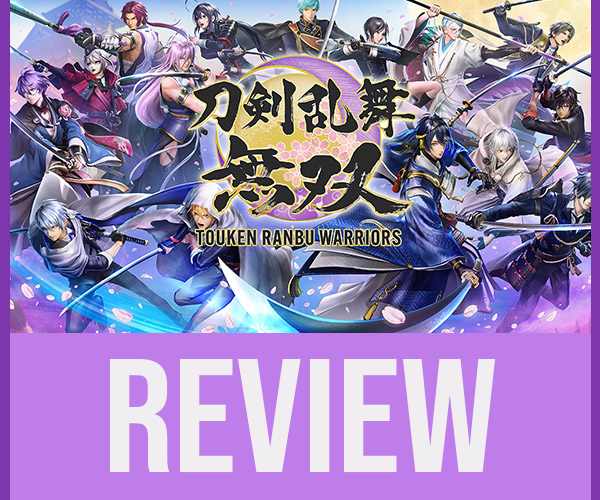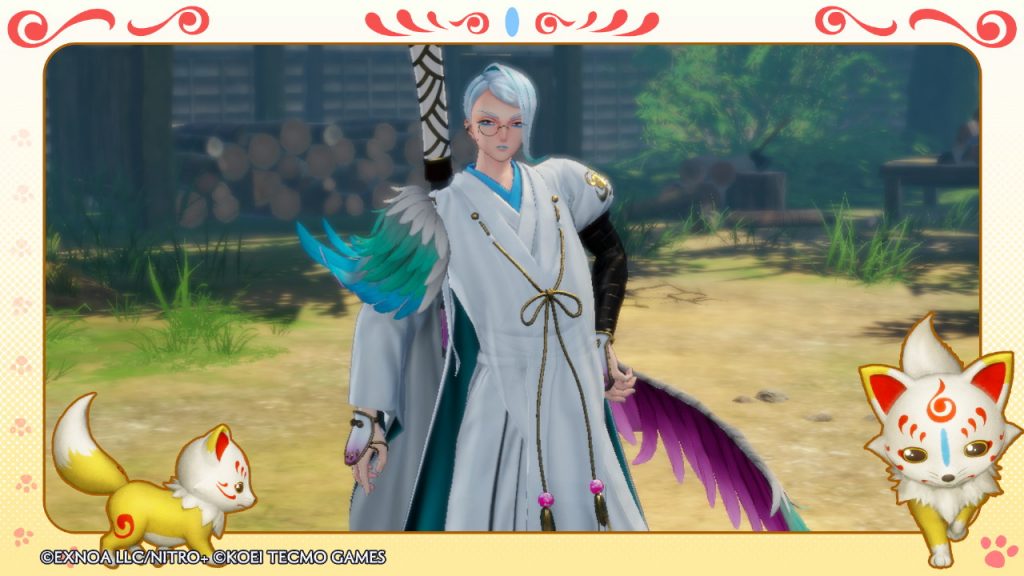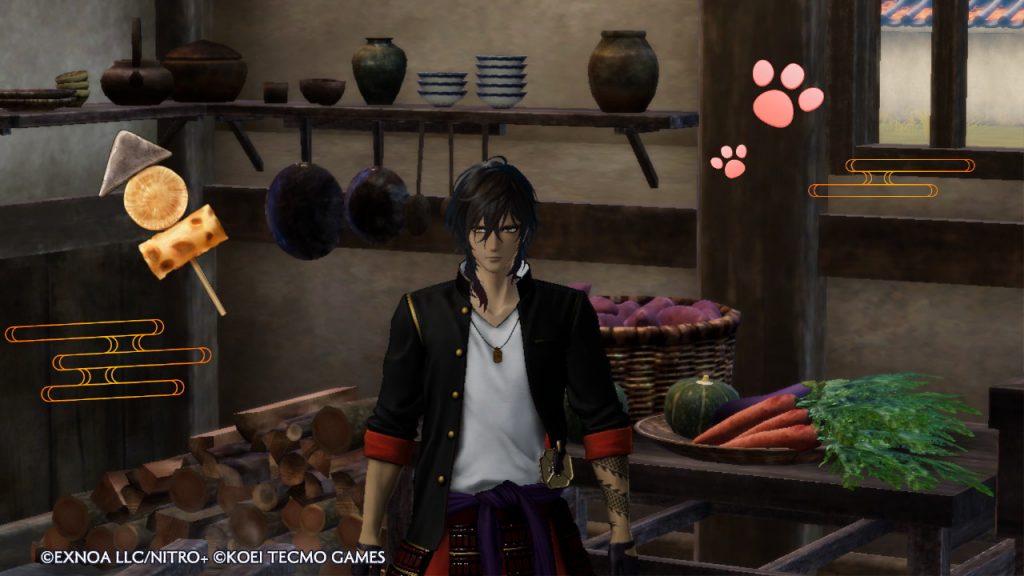A lot of properties have gotten the Warriors treatment, from The Legend of Zelda to One Piece, but Touken Ranbu might be one of the best-suited series for the Warriors format from the premise alone. Originally a free-to-play browser game released in 2015, Touken Ranbu features a huge cast of anthropomorphic historical swords in the form of handsome men designed by various artists. Since then, it’s become immensely popular, particularly in Japan, and has multiple adaptations in the form of anime, manga, stage plays, and even a live-action film. There is now also a mobile version, as well as an English localization of the game that was released in 2021.
The premise of Touken Ranbu is that the Touken Danshi (“swordsmen”) are elite fighters sworn to protect history from the History Retrograde Army, who are threatening to change the course of history by going back and time and interfering with significant battles and historical events to further their own goals. Players of the browser/mobile game take on the role of the Saniwa (“master”) to manage and deploy the various Touken Danshi on missions to protect the timeline – and, of course, create new Touken Danshi as they’re added to the game through the gacha mechanic.
While the source material has limited gameplay that is mostly automated, it’s easy to see how a bunch of sword boys fighting forces that are trying to change history makes for a natural fit for the “1-on-1000” action format of Koei Tecmo’s Warriors games. Of course, Warriors developers Omega Force are behind Touken Ranbu Warriors, but Ruby Party, Koei Tecmo’s team best known for their otome game titles, also assisted with this release. That effectively makes it the first Ruby Party game to come out in English for PC and Nintendo Switch!
There are no romance or otome elements to Touken Ranbu Warriors, though. Still, it offers plenty of eye candy for fans of cute anime-style boys, from managing the 15 characters and their bond levels to unlock short vignettes as they grow closer to assigning them to different locations around your base and watching them do things like sipping tea.
The question many may have when considering whether to pick up Touken Ranbu Warriors is whether it’s a good title for Warriors fans with no background in Touken Ranbu, or a release that caters more to existing fans of Touken Ranbu. As the most casual Touken Ranbu “fan” I could possibly be (I love the character designs, particularly those by kinako, have played a minuscule amount of the browser game and watched a couple of episodes of one of the anime), and a slightly less casual fan of Warriors games (Samurai Warriors 3 was my jam, and I’ve dipped my toes in multiple other mainline Warriors games and spinoffs), I’ll try my best to answer that question!
Of course, the main meat of the game is in the classic Warriors-style action, where you control one of the characters and face off against hordes of enemies in an attempt to thwart the evil forces of the History Retrograde Army. These missions are broken into sorties, with the 15 characters in your arsenal split into teams that are sent out at different times. The first time you play a mission, you’re limited to playing as only the characters from the assigned team, with an occasional random character from a different team available to select from those assigned to the Honmaru.
Missions and combat will be largely familiar to fans of Warriors games. Each mission consists of different goals, such as stopping advancing forces or protecting a certain characters. Every character has a regular attack, special attacks, and an extra special Hissatsu attack. With the regular control scheme, these attacks are mapped to different buttons, but Touken Ranbu Warriors also offers an easy mode where attacks and evasion are all controlled with a single button for ease of play.
During missions, you will be guided by the adorable Konnosuke, who directs you to points of interest and will investigate the area when necessary. You’ll often be out on sorties with another Touken Danshi, who can join your character for special attacks, as well. Once the partner gauge is full, you can press a button to have them join your character for special partner attacks for a limited time.
I did notice that the AI for these backup characters was a little flakey, and they often stood around not doing much of anything. It’s a shame there’s not a two-player co-op mode so that you can play with a friend in these instances, especially since that’s a pretty common feature in recent Warriors games.
Between missions, you can upgrade your Touken Danshi to unlock various stat boosts and new special attacks, as well as assign the Danshi in your roster to different areas of the Honmaru base. Occassionally, different minigames will be available to play in the Honmaru, such as onigiri making, ikebana flower arrangement, and more. These minigames are helpful for getting extra materials to level up and purchase items with, so they’re worth doing, but I found them to be pretty repetitive since they’re quite simplistic (but luckily, it’s not too hard to get good results for more materials).
I was provided with the digital deluxe version of the game, which comes with 16 Uchiban outfits (alternative outfits for the characters to wear in replays and in the Honmaru), 5 Honmaru backdrops, and 5 additional pieces of music. I personally didn’t find these extras to be worth the price of the digital deluxe version ($109.99 USD, versus $59.99 for the regular edition), but fans of Touken Ranbu may want to pick them up together or individually (more info on the DLC here). I did enjoy changing the Honmaru backdrops and outfits for some photo sessions – yes, the game includes nice photo mode with filters, stickers, and more!
To be honest, I think there’s a lot to enjoy here for fans of Touken Ranbu, but as a Warriors action game, Touken Ranbu Warriors feels quite limited. Even other tie-in Warriors games like the Hyrule Warriors titles have more enthralling gameplay, from the option for co-op to more diverse maps, enemies, and objectives.
I don’t want to pigenhole Touken Ranbu players as not being familiar with action games (in fact, one of my good friends is both a major Touken Ranbu fan and a dedicated Warriors fan!), but it seems like the developers have done just that. While I appreciate that the game has an easy mode, I wish the maps were a bit longer and more involved. In addition, since all of the characters are based on different swords, a lot of them end up feeling rather similar to play as, and I found myself missing the more varied casts of other Warriors games.
On the flip side, there is some great stuff here for fans. For example, while I may not be deep in the Touken Ranbu weeds, I do like many of the Japanese voice actors featured, and hearing all of the voiced story and Honmaru dialogue is a real treat. There are even little features such as the ability to blow wind on the characters in the Honmaru and see how they react!
The story is a fun time-traveling romp, and there are lots of great interactions between the various characters, though many of the references may go over the heads of the Touken-unfamiliar. Though I haven’t fully completed the game as of this review, I don’t think the levels have the same replayability of other Warriors titles I’ve tried, and there’s no extra mode like Adventure Mode in Hyrule Warriors or the Citadel of Samurai Warriors 5.
Finally, I would be remiss to mention a couple remaining gripes that might be rather specific to me, but I’ll include them anyway. First, I really wish Touken Ranbu Warriors used the official 2D character art in some capacity! All of the art is so gorgeous, it seems like a shame that it wasn’t included. But since they did make 3D models of all of these characters, I suppose it makes sense that those would be the focus (though I feel they pale in comparison to the 2D art). Also, I wonder how the Touken Danshi were chosen for the roster, as it’s missing some I thought for sure would be included, such as Kiyomitsu, Yasusada, and Kogitsunemaru.
As you can probably tell, I’m going to say that it’s hard to recommend Touken Ranbu Warriors to folks who aren’t already somewhat invested in the Touken Ranbu franchise. Perhaps you’ve played the original game, or watched some of the anime, but an interest, if not familiarity, is really required to enjoy what Touken Ranbu Warriors has to offer. Though Touken Ranbu fans may thoroughly enjoy what’s available, as a Warriors game, it’s a bit too bare-bones for me. Instead, it offers some nice Danshi eye-candy for short, low-stakes play sessions on my Nintendo Switch.
A digital deluxe code for Nintendo Switch was provided by the publisher for the purpose of this review.






